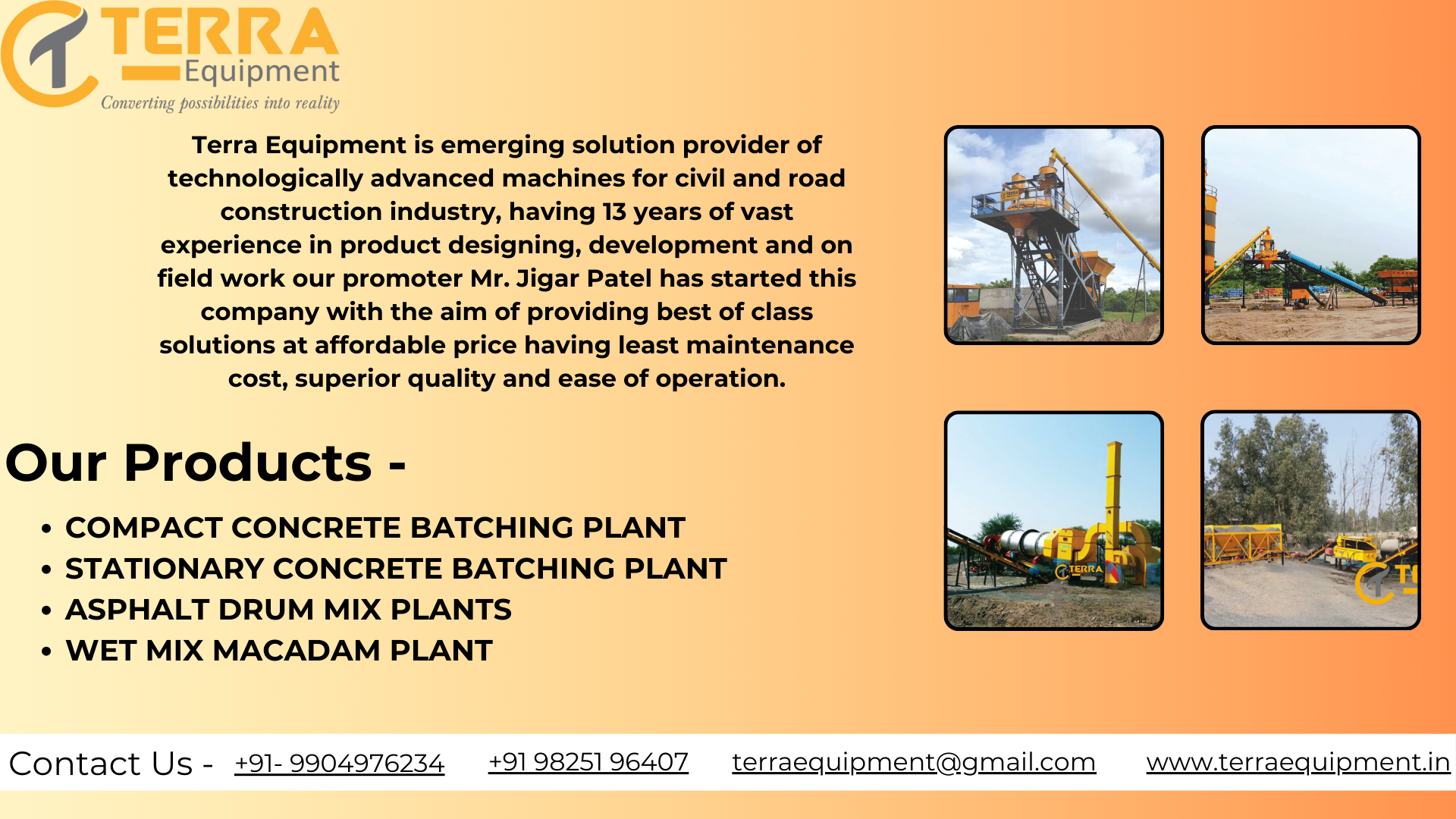Concrete Batching Plant in India
Introduction
What is a Concrete Batching Plant?
A Concrete Batching Plant (CBP) is a mechanical setup that automates the production of ready-mix concrete in precise quantities and mix designs. It ensures accurate measurement, thorough mixing, and quick delivery to construction sites.
Types of Batching Plants:
-
Stationary Batching Plants – Ideal for large-scale, long-duration projects.
-
Mobile Batching Plants – Easy to transport; suited for smaller or temporary sites.
-
Compact Batching Plants – Best for space-constrained areas.
-
Inline/Single Bin Plants – Cost-effective for small batch production.
How It’s Made (Manufacturing Process)
Manufacturing a concrete batching plant involves several detailed stages:
1. Design & Engineering
2. Raw Material Selection
-
Heavy-duty steel for structural components
-
Galvanized metal for bins and hoppers
3. Fabrication Process
-
CNC machining and laser cutting for precision parts
-
Welding and bolting for assembling silos, bins, mixers, and conveyors
4. Mechanical Assembly
-
Installation of cement silo, aggregate bins, conveyors, weighing systems, and mixers
5. Electrical and Automation Integration
-
PLC-based control panels
-
SCADA or HMI-based user interface
6. Testing and Calibration
-
Dry-run and wet-run testing
-
Calibration of sensors and load cells for measurement accuracy
7. Final Quality Check and Dispatch
-
Final inspection as per ISO and BIS norms
Where It’s Used
Concrete Batching Plants are widely used in:
-
Commercial and Residential Construction
-
Highways, Roads, and Bridges
-
Dams and Canals
-
Airport Runways and Taxiways
-
Precast Concrete Manufacturing
-
Industrial Warehouses and Plants
Key Features
-
Automated Control Panel (PLC/HMI)
-
Accurate Weighing Systems (load cells for cement, aggregates, water, and additives)
-
Twin Shaft or Planetary Mixer for homogenous mixing
-
Cement and Fly Ash Silos
-
Water and Additive Dosing Pumps
-
Skip Hoist or Belt Conveyor Feeding System
-
Dust Collection and Pollution Control Systems
-
Mobile or Modular Design Options
Importance in Construction
-
Consistent Concrete Quality: Precise control of mix ratios
-
Time Efficiency: Faster concrete production than site mixing
-
Labor Saving: Reduces manual effort
-
Environmental Compliance: Controlled emissions and water use
-
Project Accuracy: Supports customized mix designs (M20, M25, M40, etc.)
Advantages
| Aspect | Advantages |
|---|---|
| Automation | Reduces human error, increases consistency |
| Scalability | Available in capacities from 15 m³/hr to 120+ m³/hr |
| Flexibility | Can produce different grades of concrete on demand |
| Customization | Mix design tailored to structural requirements |
| Mobility | Mobile models can be moved to new projects |
| Cost-effective | Saves cost by bulk production and less material wastage |
| Eco-friendly | Modern systems include dust filters and water recycling |
| Low Maintenance | Designed for durability with wear-resistant materials |
Significance in the Indian Context
-
Supports National Infrastructure Projects like Bharatmala, Sagarmala, Smart Cities, and PMAY.
-
Improves Rural Connectivity through cost-efficient concrete roads under PMGSY.
-
Encourages Industrialization with quality concrete for factories and SEZs.
-
Boosts Quality Standards in line with BIS and RMCMA norms.
-
Promotes ‘Make in India’ with indigenous design, manufacture, and servicing.
Why Choose Indian Manufacturers?
-
Cost Advantage: Competitive pricing with global quality standards.
-
Quick Availability: Shorter lead times due to local manufacturing.
-
On-site Support: Easy access to service teams and parts.
-
Adaptability: Designed for Indian site conditions—dust, heat, and power fluctuations.
-
R&D Innovations: Smart batching, AI-based analytics, and remote monitoring integration.
FAQs
Q1: What is the typical output capacity of an Indian batching plant?
Most Indian plants range from 15 m³/hr to 120 m³/hr, depending on size and model.
Q2: Can it produce multiple mix designs in one project?
Yes, with programmable controllers, multiple mix designs (M20, M30, etc.) can be produced.
Q3: Is a concrete batching plant environmentally friendly?
Modern plants use dust collection units, water recycling, and enclosed silos to meet environmental norms.
Q4: What is the life span of a batching plant?
With regular maintenance, plants can operate efficiently for 15–20 years.
Q5: Can a plant be relocated?
Mobile and modular batching plants can be easily dismantled and moved to another site.
Conclusion
Concrete Batching Plants have transformed the landscape of Indian construction by delivering high-quality, consistent, and large volumes of concrete with efficiency and automation. Whether it’s a metro rail project or a remote village road, these plants ensure precision, reduce costs, and save time. Choosing an Indian-made batching plant is not only economical but also strategically sound due to their adaptability, support infrastructure, and growing technological sophistication.
Comtact:-+91-9825196407 , +91-9825196407
Gmail:-terraequipment@gmail.com
Website:-https://terraequipment.in/

